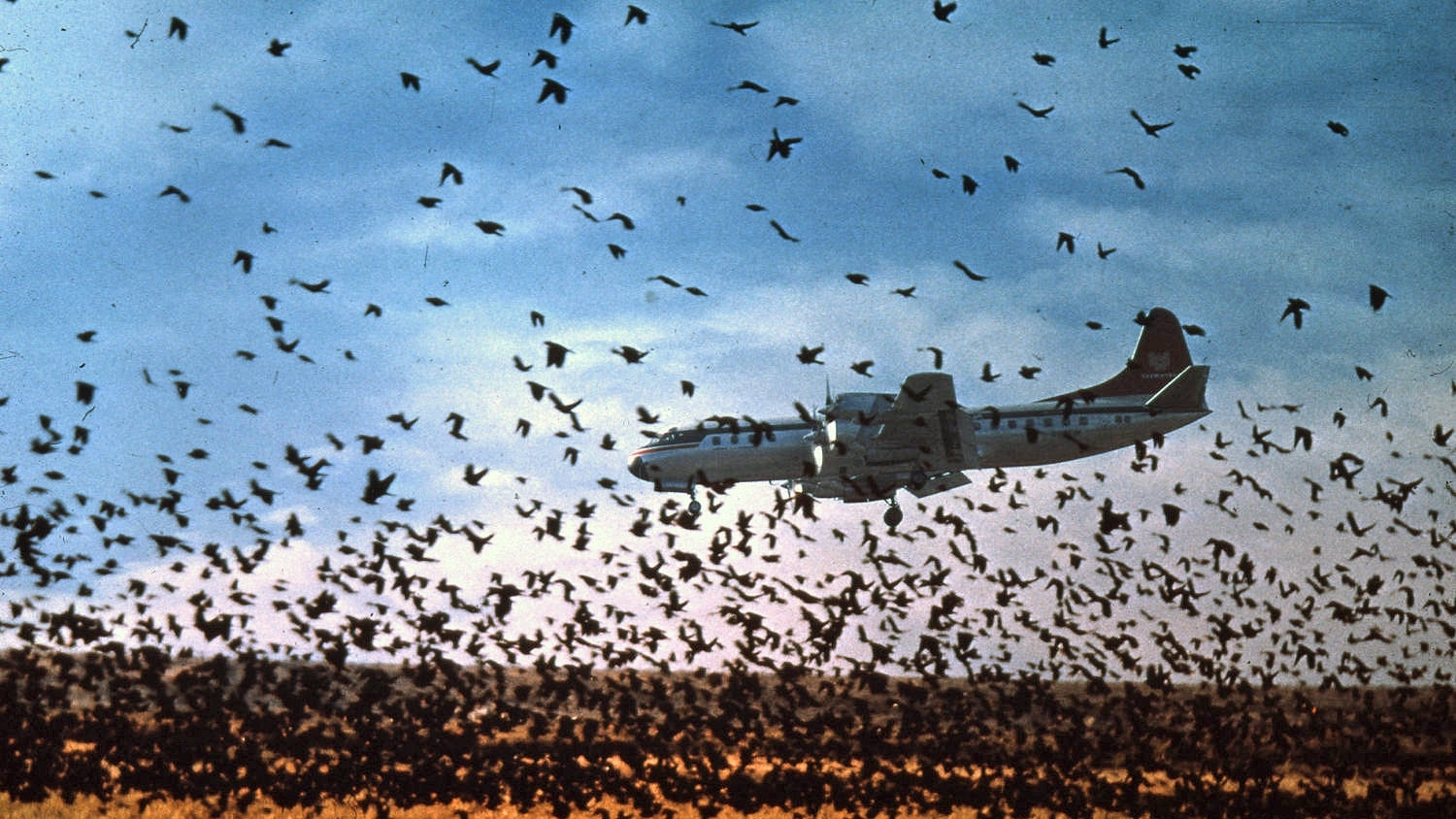Airport Wildlife Hazards

Wildlife Services (WS) provides Federal leadership and expertise to resolve wildlife conflicts that threaten public health and safety. We partner with the Federal Aviation Administration (FAA), Department of Defense, airports, and the aviation industry to provide scientific expertise and operational assistance to reduce the safety hazards and economic impacts to aviation caused by birds, mammals, and other wildlife.
WS provides wildlife hazard management at airports upon request, led by trained Qualified Airport Wildlife Biologists (QAWB) per FAA standards. Please contact your local WS State Office for more information.
Wildlife Damage Assistance
Find your State office in the dropdown menu or call 866-4USDA-WS to be automatically routed to a State office based on the area code you are calling from.
About Airport Wildlife Hazards
Wildlife strikes are when birds or other animals collide with an airplane. This may occur when the airplane is taking off, landing, or while it is in the air. Wildlife strikes have increased in the past 30 years because both populations of many hazardous wildlife species and numbers of aircraft movements are increasing (Dolbeer and Eschenfelder 2003). For example, 13 of the 14 largest (>8 lbs) bird species in North America have shown significant population increases in the past 30 years. These species include Canada geese, white and brown pelicans, sandhill cranes, wild turkeys, and bald eagles.
What is “snarge”?
Snarge is the biological remains left on a plane after a wildlife strike. If snarge is collected and sent to the Smithsonian Institute's Feather Identification Lab, feather fragments can be used to identify the species involved in some wildlife strikes. For strikes without significant feather fragment material, DNA can be extracted from the blood and tissue samples to positively identify the animal involved.
Wildlife Strike Database - Wildlife Services, through an interagency agreement with the Federal Aviation Administration, has managed the National Wildlife Strike Database (NWSD) from 1990 to the present. The NWSD contains over 210,000 records of strike reports between civil aircraft and wildlife in the USA, including about 14,400 reports in 2017.
In addition, more than 4,000 strikes were reported by the U.S. Air Force in 2017.
Wildlife collisions with aircraft cost U.S. civil and military aviation approximately $1 billion annually and pose a serious safety hazard.
This Program Data Report has been developed to provide the public with information about WS' wildlife damage management activities at airports. WS takes pride in its partnerships and cooperation with resource owners in developing and implementing sound, science-based projects designed to reduce conflicts between humans and wildlife.
In recognition of WS’ expertise and accountability, the Federal Aviation Administration (FAA) entered into a Memorandum of Understanding (MOU) with WS, which encourages airports to “request technical and operational assistance from WS to reduce wildlife hazards.” The Department of Defense executed a similar MOU to address wildlife conflicts at military installations. In 2013, a MOU between WS, the National Association of State Aviation Officials (NASAO) and the FAA was signed, fostering cooperation between the signatory parties to reduce wildlife hazards at airports in every state.

